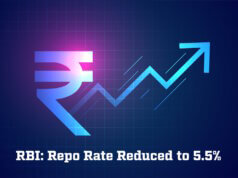Phase-I of the Ahmedabad Metro Rail Project was among several key projects cleared by the Union Cabinet recently.
The Cabinet, presided over by Prime Minister Narendra Modi, approved phase-I of the Ahmedabad Metro costing an estimated Rs. 10,773 crore to build. The Indian government will contribute Rs. 1,990 crore in equity and subordinate debt.
Phase-I will cover a length of 35.96 km along two corridors, North-South Corridor (15.42 km) from APMC to Motera Stadium and East-West Corridor (20.54 km) from Thaltej Gam to Vastral Gam.
The project will be executed by Metro-Link Express for Gandhinagar and Ahmedabad (MEGA) Company Ltd, which will be converted into a 50:50 jointly owned company of the Government of India and Government of Gujarat.
Chabahar Port in Iran
The Cabinet approved the framework of the inter-governmental MoU to be finalised by India and Iran with regard to Chabahar Port located in Sistan-Baluchistan Province in southeast Iran.
An Indian voint venture company will take on lease two fully constructed berths in phase-I of the Chabahar Port project for a period of 10 years, which could be renewed by mutual agreement.
Accordingly, the Cabinet approved the constitution of a joint venture company or a special purpose vehicle comprising Jawaharlal Nehru Port Trust and Kandla Port Trust and, if required, a local Iranian partner and/or an Indian private sector partner to serve as the vehicle for India’s participation in development the port. Approval was also granted for incurring annual revenue expenditure of $22.95 million to support operational activities of the Indian JV.
The JV company will also invest $85.21 million for equipping the two berths within 12 months, one as a container terminal and the other as a multipurpose cargo terminal.
India will transfer ownership of the equipment to be provided through the investment to Iran’s Port and Maritime Organisation without any payment at the end of the tenth year. India can form a JV that could include one or more Iranian companies subject to the approval of P&MO.
Significantly, India and Iran can enter into subsequent negotiations for participation in the construction, equipping and operating of terminals in phase-II on BOT basis, subject to India’s satisfactory performance in phase-I.
Iran would make efforts to provide free trade zone conditions and facilities at the port.
India’s presence at Chabahar Port would give it a sea-land access route into Afghanistan via Iran’s eastern borders.
India-Nepal agreement on power
The Union Cabinet has cleared the India-Nepal agreement on facilitating and strengthening electric power trade, cross-border transmission interconnection and grid connectivity between the two countries. Currently, Nepal imports about 200 MW electricity from India annually. New cross-border transmission lines are under construction, which will more than double the transmission capacity, over the next two years. The agreement will also provide a framework for imports, by Indian entities, of surplus power generated from future hydropower plants in Nepal, on mutually acceptable terms and conditions.
India-US gas hydrates
The Cabinet also approved the signing of an MoU between India and United States for cooperation in gas hydrates for a period of five years. The cooperation with the United States Department of Energy in the field of gas hydrates will facilitate active participation of the National Gas Hydrate Programme and DOE scientists in data collection, analysis and identification of sites for pilot production testing. This would be under the planned NGHP Expedition 02 & 03 in deep water areas of the Eastern, Western and Andaman Sea.
Gas hydrates are considered vast resources of natural gas and are known to occur in marine sediments on continental shelf margins. Gas hydrate resources in India are estimated at 1,894 tcm and these deposits occur in the Eastern, Western and Andaman offshore areas.
The Ministry of Petroleum and Natural Gas formulated the National Gas Hydrate Programme in 2000. NGHP Expedition 01, launched in 2006, established the presence of gas hydrates in KG and Mahanadi basins and Andaman deep waters. NGHP Expedition 02 & 03 is in an advanced stage of planning and are due in the period 2014-2017. Twenty sand-prone sites are planned to be cored and 40 wells are planned to be drilled.











